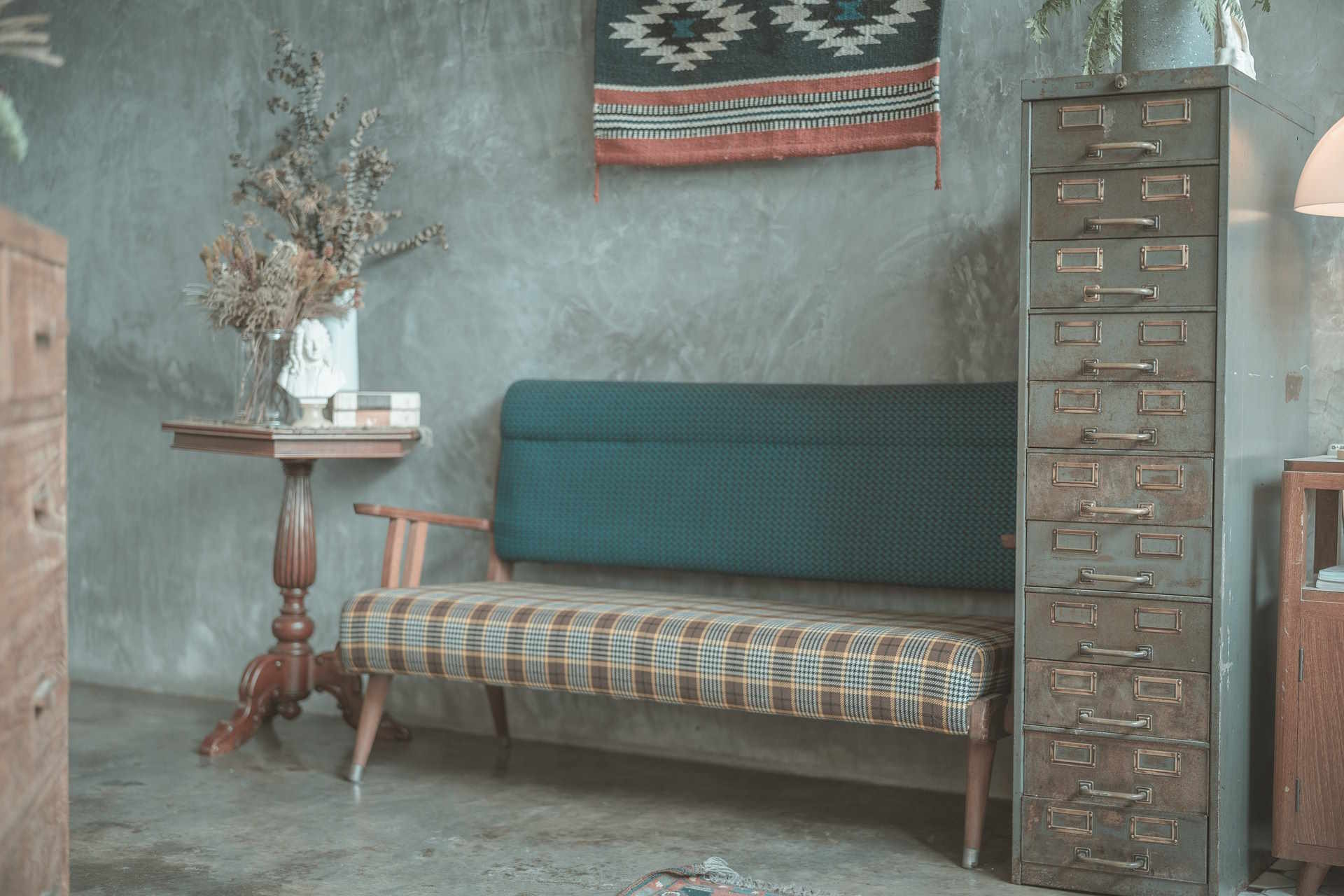Neon Nostalgia: The Resurgence of 80s Aesthetics in Modern Home Design
Vibrant hues, geometric patterns, and a bold clash of styles - the 80s are making a comeback in home decor, but with a contemporary twist. This isn't your grandmother's pastel-infused living room; it's a fresh take on retro charm that's capturing the hearts of design enthusiasts and homeowners alike. Let's dive into the world of neon nostalgia and explore how this trend is reshaping modern interiors.

The Memphis Group: The Foundation of 80s Design
At the heart of 80s aesthetics lies the influential Memphis Group, an Italian design and architecture collective founded by Ettore Sottsass in 1981. Their bold, colorful, and often polarizing designs challenged the austere minimalism of the 70s, introducing a playful and irreverent approach to furniture and decor. Today, we’re seeing a renewed appreciation for Memphis-inspired pieces, with their characteristic squiggles, laminate surfaces, and clashing colors making their way into contemporary homes.
Modern designers are reinterpreting Memphis principles, creating furniture and accessories that pay homage to the original movement while incorporating current materials and manufacturing techniques. Think chairs with asymmetrical backrests in candy colors, coffee tables with terrazzo tops and metallic legs, or shelving units that look more like sculptural art pieces than functional storage solutions.
Neon Lights: From Club to Living Room
One of the most iconic elements of 80s visual culture was the ubiquitous neon sign. Once relegated to storefront windows and nightclub entrances, neon has found a new home in interior design. Custom neon art pieces are becoming popular statement elements in living rooms, bedrooms, and even kitchens. These glowing installations add a touch of whimsy and a soft, ambient light that can transform the mood of a space.
Designers are getting creative with neon, moving beyond simple text to create intricate shapes and patterns. Some are even incorporating neon elements into furniture design, with glowing edges on tables or backlit headboards. The key to using neon effectively is balance - a little goes a long way, and pairing it with more subdued elements can create a sophisticated look that nods to the 80s without feeling dated.
Pattern Play: Geometric Shapes and Bold Graphics
The 80s were all about patterns - from the Memphis Group’s iconic squiggles to the bold geometric shapes that adorned everything from clothing to album covers. This love for pattern is making a comeback in wallpapers, textiles, and even tile designs. Modern interpretations often feature updated color palettes or mix traditional 80s motifs with contemporary elements for a fresh take.
Terrazzo, a material that saw widespread use in 80s interior design, is experiencing a major revival. Today’s terrazzo comes in a variety of colors and scales, from large-chip patterns that make a bold statement to subtle, small-scale designs that add texture without overwhelming a space. It’s being used not just for flooring but also for countertops, wall cladding, and even as a pattern for textiles and wallpapers.
Color Explosion: Embracing the Bold and the Bright
If there’s one thing the 80s weren’t afraid of, it was color. The decade’s palette was a riot of neons, pastels, and jewel tones, often used in unexpected combinations. Today’s designers are embracing this fearless approach to color, but with a more curated eye. Instead of the sometimes chaotic color schemes of the original era, we’re seeing thoughtful combinations that create impact without overwhelming the senses.
Teal and coral, a classic 80s pairing, are making a comeback but in more sophisticated shades. Neon accents are being used against neutral backgrounds for a pop of energy that doesn’t dominate the space. And pastels, once dismissed as saccharine, are being reimagined in complex, muted tones that feel fresh and modern.
Retro Tech: Vintage Electronics as Design Elements
The 80s saw the birth of personal computing and the rise of video game culture, and these technological relics are now finding new life as design elements. Vintage televisions, early personal computers, and classic game consoles are being repurposed as unique decor pieces. Some designers are even creating modern furniture inspired by the aesthetics of 80s tech, like coffee tables that resemble oversized Nintendo controllers or lamps shaped like classic computer monitors.
This trend isn’t just about nostalgia; it’s a commentary on our relationship with technology and how quickly it evolves. By incorporating these outdated gadgets into our decor, we’re creating a dialogue between past and present, highlighting the rapid pace of technological change while celebrating the enduring appeal of retro design.
The Art of Balance: Integrating 80s Elements into Modern Spaces
The key to successfully incorporating 80s-inspired design into contemporary interiors is balance. Too much can quickly veer into kitsch territory, while too little might miss the mark entirely. Designers are finding success by choosing one or two statement pieces or elements that clearly reference the 80s and pairing them with more subdued, modern furnishings.
For example, a Memphis-inspired bookshelf might be the focal point in a room with otherwise minimalist decor. Or a neon art piece could add a pop of color to a neutral, Scandinavian-inspired space. The goal is to create a dialogue between past and present, resulting in interiors that feel both nostalgic and thoroughly modern.
As we continue to explore and reinterpret design movements of the past, the resurgence of 80s aesthetics offers a playful and energetic counterpoint to the minimalism that has dominated interiors in recent years. By embracing the bold colors, patterns, and forms of this iconic decade, we’re not just reliving the past - we’re reimagining it for a new generation, creating spaces that are vibrant, personal, and undeniably contemporary.





